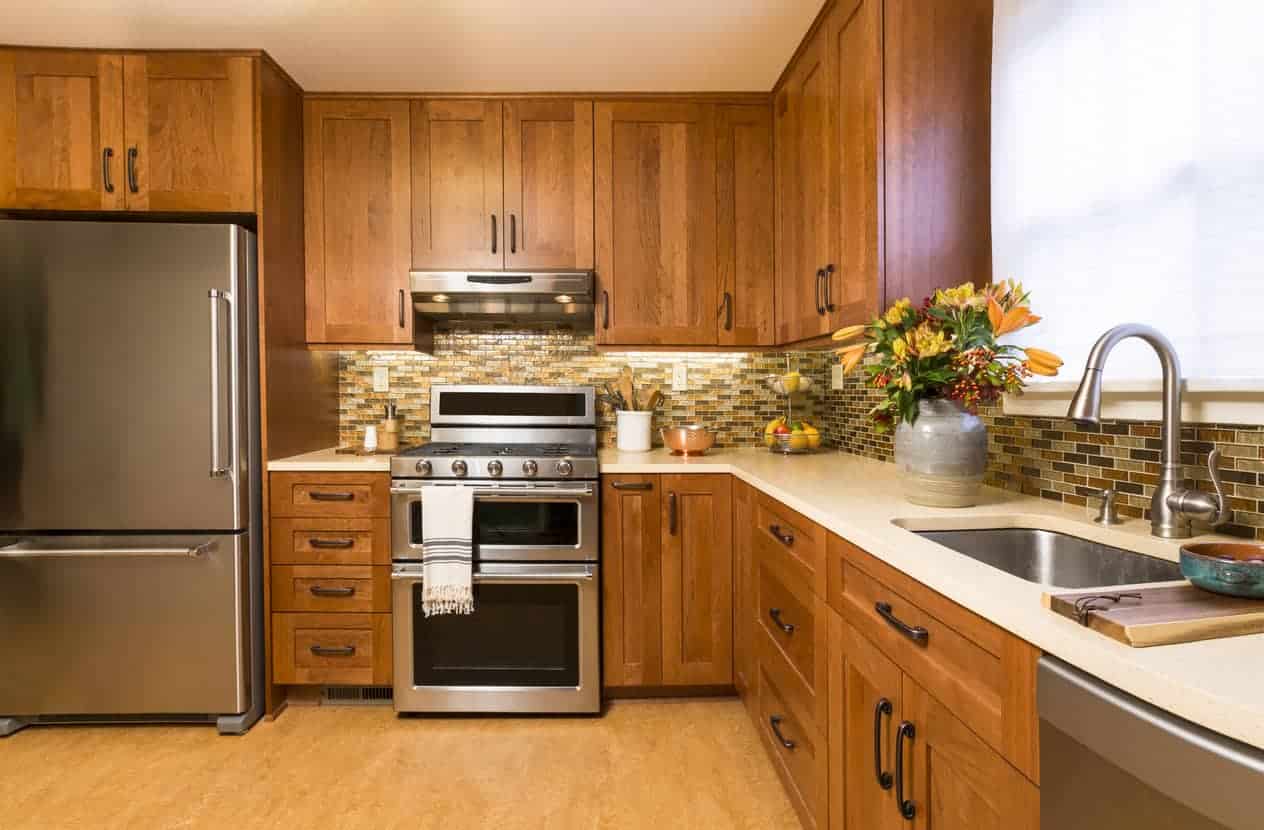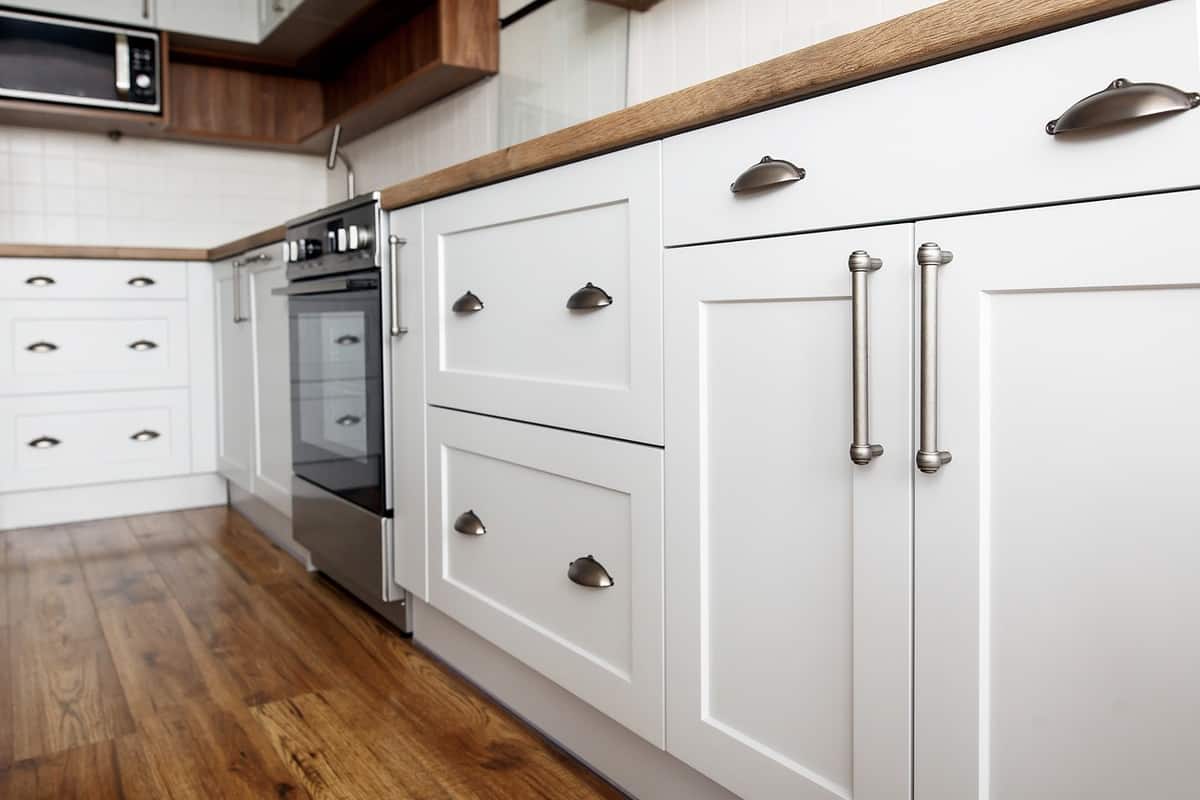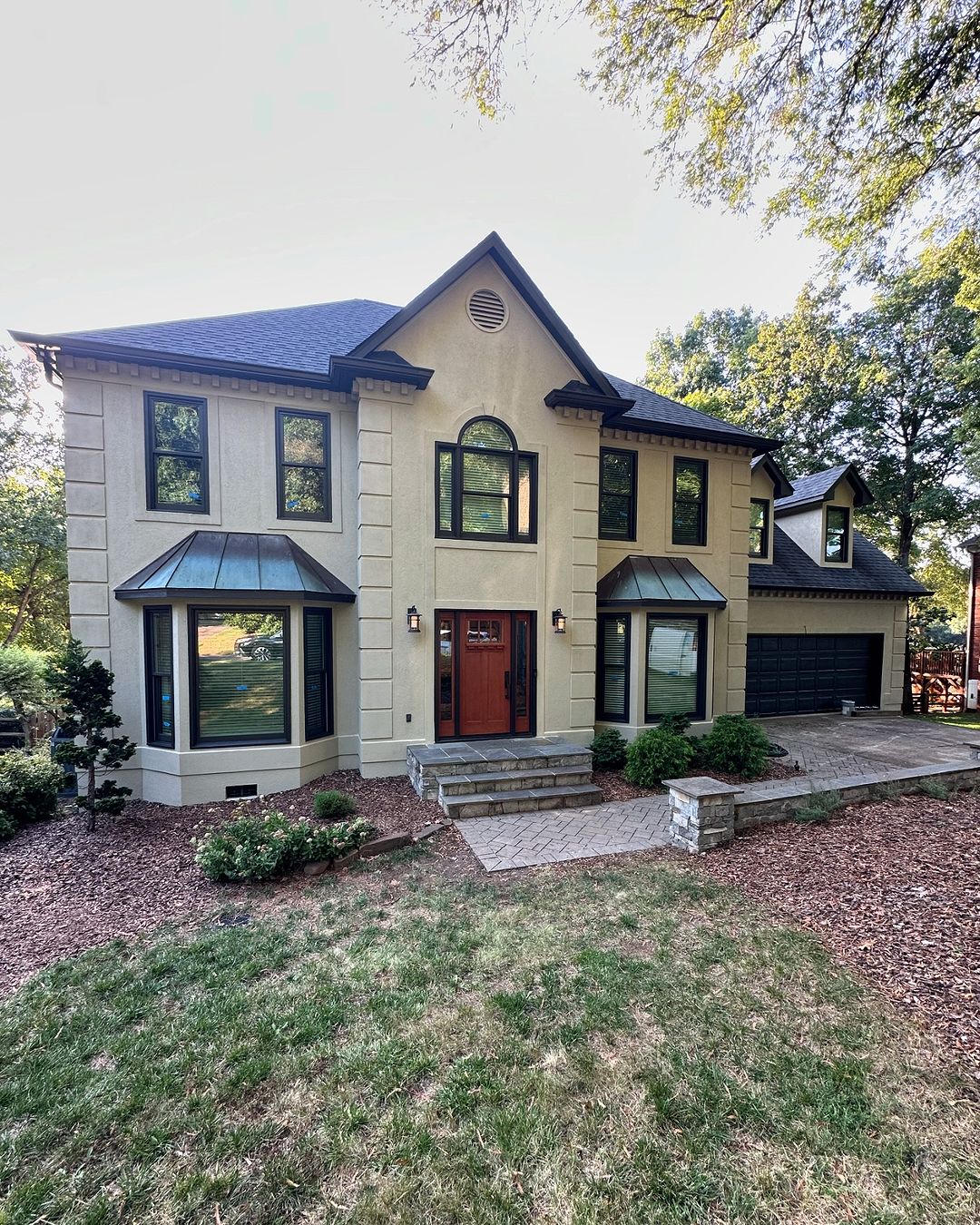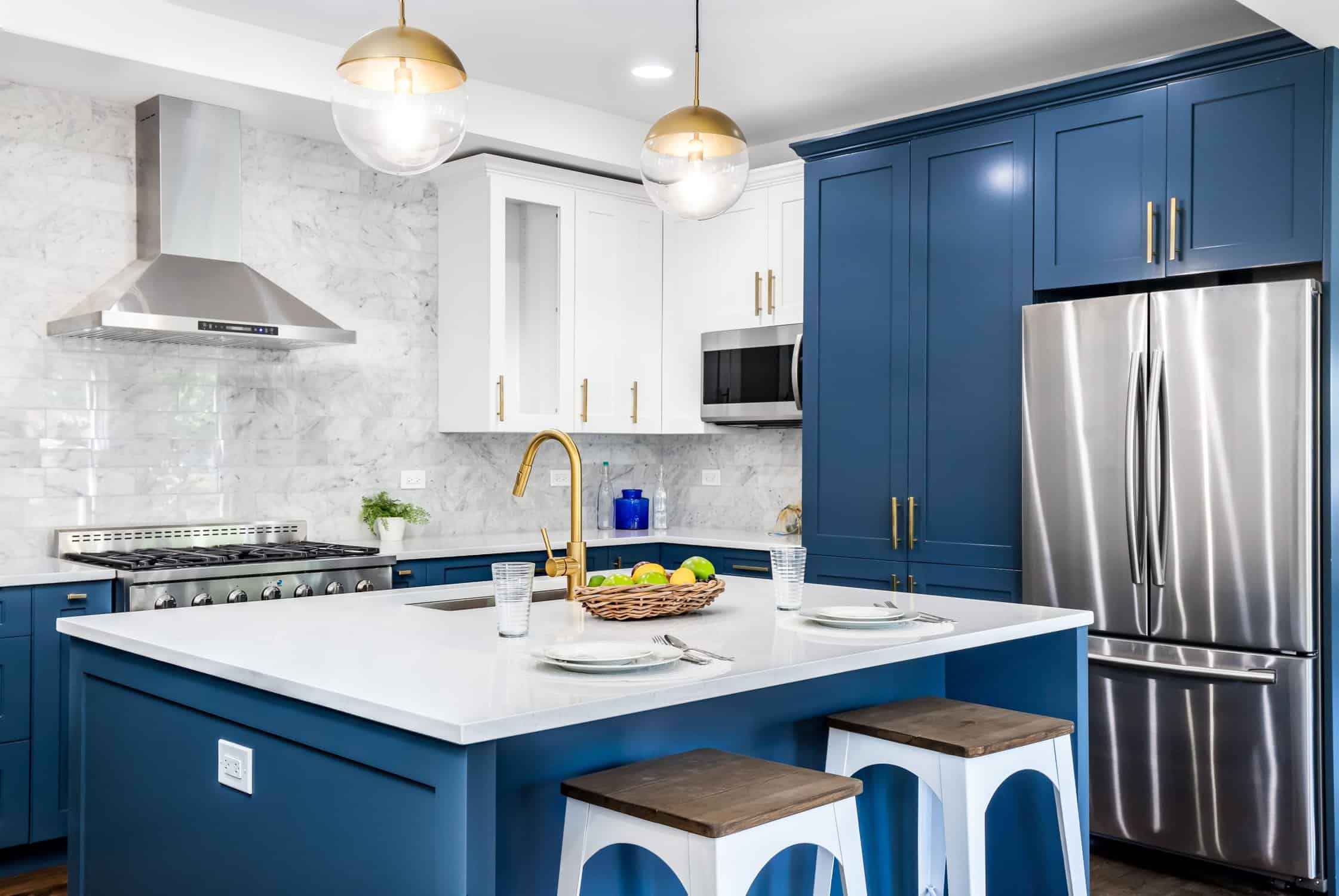If the paint stays sticky or soft, it becomes more of a headache than an upgrade. This is a common issue with kitchen cabinets, trim, and furniture, where durability is key. Tackiness makes painted surfaces prone to fingerprints, dust accumulation, and damage from daily use.
The problem often arises due to improper surface prep, humidity, or the wrong paint choice. Kitchen environments—filled with moisture, grease, and fluctuating temperatures—worsen the issue, making it essential to pick the right materials and techniques.
This guide will walk you through why kitchen paint stays tacky, immediate fixes, and long-term solutions to prevent the issue in the future.
Why Kitchen Paint Stays Tacky
Wrong Paint Type
Kitchen cabinets endure constant handling, exposure to moisture, grease, and temperature changes. Choosing the wrong paint can result in tacky, easily damaged surfaces that never fully cure, making everyday use frustrating. Many DIYers mistakenly opt for paints that are not designed for high-traffic areas, leading to prolonged softness, peeling, or an uneven finish.
Common Paint Types That Cause Sticky Kitchen Cabinets
- Regular Latex Paint – While latex paints are great for walls, they lack the durability needed for kitchen cabinets. Many standard latex paints remain too soft, especially in humid kitchen conditions, leading to prolonged tackiness. Even after weeks, they may feel slightly rubbery or sticky when touched.
- Oil-Based Paint – Oil-based paints cure to a hard, durable finish, making them a solid choice for kitchen cabinets. However, they take significantly longer to dry—often 24-48 hours per coat—causing delays in kitchen use. Without proper ventilation, oil-based paints can remain tacky for an extended period.
- Chalk Paint – Popular for furniture makeovers, chalk paint is not ideal for kitchen cabinets unless properly sealed. It dries with a powdery or matte finish, which can feel soft and sticky when exposed to kitchen humidity. Sealing it with wax or polyurethane is essential to prevent prolonged tackiness.
- Low-Quality Paints – Bargain-brand paints often contain excessive fillers and lower-grade binders, which prevent proper drying and adhesion. This leads to a sticky, uneven surface that fails to withstand daily wear and tear in the kitchen.
Best Paints for Kitchen Cabinets
For a durable, long-lasting finish that resists moisture, grease, and daily use, choose high-quality cabinet-grade paints specifically designed for kitchen environments:
Acrylic Urethane Enamel (e.g., Benjamin Moore Advance, Sherwin-Williams Emerald Urethane)
- Fast-drying compared to traditional oil-based paints
- Hard, durable finish that resists moisture and grease
- Easy to clean and maintain
Oil-Based Enamel
- Extremely durable and long-lasting
- Smooth, factory-like finish when applied correctly
- Requires good ventilation for proper drying
Choosing the right paint for kitchen cabinets ensures a professional-quality finish that won’t remain tacky, even in humid environments. Investing in high-performance enamel paints will save time, prevent frustration, and extend the lifespan of your kitchen cabinetry.
Poor Surface Preparation
High Humidity & Poor Ventilation
Kitchens naturally have high humidity from cooking and dishwashing, which slows down paint drying. Poor airflow traps moisture, preventing proper curing. To fix this, run exhaust fans while painting to improve ventilation, use a dehumidifier or air conditioner to control moisture levels, and paint during low-humidity hours, such as in the morning or evening, for better drying conditions.
Thick Paint Application
Thick coats take longer to dry and can trap moisture, leading to a rubbery finish. To prevent this, spray painting is ideal for applying ultra-thin, even coats. Always use multiple thin layers rather than one thick application, and wait 2-4 hours between coats, or longer in humid conditions, to allow proper drying.
Immediate Fixes for Tacky Kitchen Paint

When kitchen cabinets remain sticky after painting, addressing the issue quickly is crucial to prevent damage and ensure a smooth, durable finish. Here are several methods to help speed up drying and fix tacky paint effectively.
Improve Airflow & Ventilation
Proper ventilation is essential for drying kitchen cabinet paint, especially in a space prone to humidity from cooking and dishwashing. Open windows and turn on ceiling or exhaust fans to improve air circulation. For an extra boost, place portable fans near the cabinets to help wick away moisture and speed up drying.
Apply Heat to Speed Up Drying
If cabinets remain tacky despite proper airflow, applying gentle heat can help. Use a hairdryer or heat gun on a low setting to warm up sticky spots, promoting faster evaporation of moisture trapped in the paint. If possible, remove cabinet doors and expose them to direct sunlight for a few hours, which can also help harden the paint.
Use Paint Hardeners or Absorbers
If the paint on your kitchen cabinets is still soft, certain additives can help speed up the curing process. For latex paint, lightly dust cornstarch or talcum powder over tacky areas to absorb excess moisture and reduce stickiness. For oil-based paints, adding a Japan Drier to the paint mixture can accelerate curing and minimize extended drying times.
Allow More Time
Some paints, especially oil-based enamels, require patience. They may feel dry to the touch within a few hours but can take 24-48 hours before another coat can be applied. If kitchen cabinet paint remains soft, avoid heavy use for at least a week to allow full curing, ensuring a durable and long-lasting finish.
Long-Term Solutions to Prevent Sticky Kitchen Paint

Preventing tacky or sticky paint on kitchen cabinets starts with using the right products and applying them correctly. Since kitchen cabinets are exposed to heat, humidity, and daily wear, it’s crucial to choose durable paints, primers, and topcoats that can withstand these conditions. Below are key strategies to ensure a smooth, long-lasting finish that won’t remain sticky.
Choose the Right Paint for Kitchen Use
Selecting the right paint type is the first step in preventing sticky cabinets. Regular wall paint is too soft for kitchen cabinets, leading to prolonged tackiness and poor durability.
- Best Paint for Kitchen Cabinets: Acrylic urethane enamel (e.g., Benjamin Moore Advance, Sherwin-Williams Emerald Urethane) dries hard, resists moisture, and offers a smooth, factory-like finish. Oil-based enamel is another excellent choice, providing superior durability but requiring longer drying and curing times.
- Best Paint for Trim: High-quality semi-gloss or satin finishes work well for kitchen trim, as they dry harder and are easier to clean.
- Avoid Flat or Matte Finishes: These paints tend to absorb moisture and stains, making them unsuitable for high-traffic kitchen areas, including cabinets and trim.
Use High-Adhesion Bonding Primers
A proper primer ensures that paint adheres well and dries evenly, reducing the chances of a sticky or tacky finish.
- For Glossy Cabinets: Before priming, lightly sand the surface or use a deglosser to help the new paint grip properly.
- For Laminate or Pre-Finished Wood Cabinets: Use a high-adhesion, stain-blocking primer such as Zinsser BIN or Kilz Adhesion to create a solid base for the paint to bond with, preventing peeling and extended drying times.
Apply Thin, Even Coats
Thick layers of paint take much longer to dry and are more likely to remain sticky. Applying thin, even coats allows each layer to dry properly before adding the next.
- Use a Sprayer for Best Results: Spray painting provides an ultra-thin, smooth coat without brush strokes, reducing the risk of sticky or uneven drying.
- If Using Brushes or Rollers: Choose high-quality brushes like Purdy or Wooster to minimize streaks and brush marks. Apply paint in long, even strokes to ensure smooth coverage.
- Wait Between Coats: Allow 2-4 hours of drying time between coats in dry conditions. In humid environments, wait longer to prevent moisture from getting trapped in the layers.
Follow Manufacturer’s Drying & Curing Times
Understanding the difference between drying time and curing time is key to avoiding sticky cabinets.
- Drying Time: When paint is dry to the touch, usually within a few hours.
- Curing Time: When paint fully hardens, which can take 7-30 days, depending on the paint type.
To prevent cabinets from becoming sticky or damaged, avoid excessive handling, cleaning, or reinstalling cabinet doors before the paint has fully cured.
Seal with a Protective Topcoat
Adding a protective topcoat enhances durability and prevents kitchen cabinet paint from staying soft or tacky.
- For Latex Paint: Apply a polycrylic or water-based polyurethane to create a hard, washable surface.
- For Oil-Based Paint: A light wax coat or polyurethane finish can improve resistance to moisture and daily wear.
By following these steps—choosing the right paint, prepping surfaces properly, applying thin coats, and allowing full curing—you can ensure a flawless, non-sticky finish on your kitchen cabinets that will last for years.
When to Call a Professional Painter
If DIY fixes don’t solve the problem, professional painters can ensure a smooth, durable finish.
Signs you need a pro:
- Paint stays sticky for over a week, even with ventilation.
- Visible brush marks, peeling, or drips after drying.
- Cabinets require a factory-smooth finish without imperfections.
Professional painters use spray techniques, high-quality primers, and controlled drying methods to ensure your kitchen cabinets and trim last for years.
Conclusion
Tacky kitchen paint can be frustrating, but the right approach can prevent and fix it.
Key takeaways:
- Prep properly (degrease, sand, prime) before painting.
- Use the right paint—acrylic urethane or oil-based enamel for kitchens.
- Control humidity and airflow to improve drying.
- Apply thin coats and follow manufacturer curing times.
- Seal with a topcoat for added protection.
If sticky paint persists, consider hiring a professional painter for a long-lasting, flawless finish. Contact us to get a free estimate.





